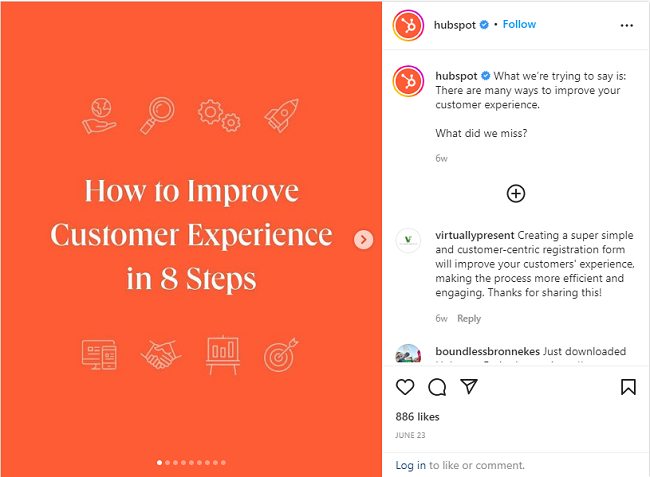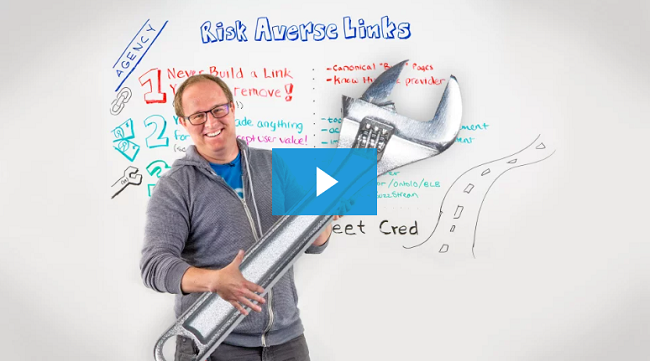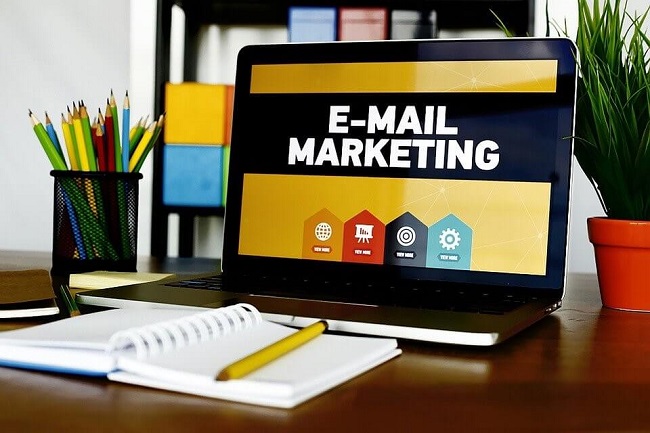Content marketing is a form of inbound marketing that focuses on delivering the right content to the right customer at the right time. This is one of the key elements of SaaS marketing – it helps customers understand the product. Specifically, content marketing uses a strategic approach to content – including all your blog posts, emails, e-books, landing pages, ads, and more.
Content marketing for SaaS is a competition – it’s all about creating and distributing valuable, relevant, and consistent content that not only attracts a well-defined audience but also retains it. Creating a strong messaging framework will create your strong content and align all your business efforts. Your positioning, messages, and content should show them how your product works and how it can solve their problems. This will then lead them to test your tool. SaaS content marketing allows you to create a less obvious “sales-y” approach to reaching new customers and positioning your brand as an industry leader. This way, when the potential customer is ready to invest, your product is a clear choice.
Are you worried that your audience will read your content? Not only do many B2B shoppers now read more content, but 48% of them read 3-5 blog posts or pieces of content before talking to the seller or brand in question. This means that your b2b SaaS content marketing strategy needs to be well thought out. In addition to this, AI content marketing strategy tools also need to be researched and considered.
Why is a special content marketing approach for SaaS business required?
To be successful, you need an effective marketing strategy to help you stand out from the crowd. For SaaS, content marketing has proven to be one of the most effective ways for a business to grow. Content creation for SaaS has therefore become a priority for many marketers.
Simply put, this is the creation and promotion of content related to your SaaS product. It is mostly used for:
- Raising market awareness
- Driving in organic traffic
- Educating your audience
The SaaS sector is currently one of the fastest-growing. And because so many SaaS brands compete for the same customers, you need one that is better than your competition.
But you may be asking: How do you do SaaS content marketing, and does it still work?
Consider the following statistics and make your own conclusions:
- Blogging attracts 55% more web traffic
- Content costs 62% less than traditional formats, and offers triple the amount of leads
- 65% of marketers say that blogging is their preferred content format
The question is not whether it still works, but are you doing what works? In 2022 and beyond, content marketing for SaaS will continue to grow. B2B content marketing is likely to remain a critical part of SaaS marketing strategies as it becomes the foundation of inbound marketing.
Here are a few reasons why this marketing strategy works.
1. Promoting market awareness
One of the most important uses of content marketing for SaaS brands is to promote brand awareness. Content marketing can be a great form of PR because it determines your brand to many people.
2. Establishes your brand as a leader
B2B buyers are very selective when it comes to the markets in which they operate. They want brands they can trust. And the best way to build trust is to build authority – content marketing can help you with that. A well-implemented B2B content marketing strategy can help you attract more backlinks, and help you build a domain on your site, which is an important factor in improving search engine optimization (SEO).
3. Educate your audience
Part of the shopping journey is educating customers about your product and the problems it solves. Content plays a big role in the survey phase, with 49% of buyers saying they want to use the content to explore further purchases.
4. Increase traffic to your website
Your website is a machine for generating potential customers. To get through to potential customers, you need to share valuable content. This can be content that you publish on your site or contributions from visitors to other sites.

7 Step SaaS content marketing plan
When it comes to content creation for SaaS, there are a few things you should know before you get started. You also need to have an idea of how to get started, which is where our handy steps come in to save the day.
So, what are the 7 steps of SaaS content marketing?
1. Define your target audience
You can employ a software development business to create a digital product. But are the results enough if you don’t know your audience? To have more targeted and therefore more effective B2C and B2B SaaS marketing is the first step.
2. Evaluate your competitors
To start promoting SaaS content without knowing that your competition is a complete waste of time and money. Before you started developing SaaS, you probably knew all your future competitors. What’s new, however, is that your SaaS content marketing competitors may be different from your product competition.
Start by analyzing your competition’s backlinks to determine which sources are getting traffic. Analyze the semantics of published content as well as the keywords and topics they cover. Research can help you identify their key strengths and weaknesses, and possibly some gaps that you may need to fill in your content.
3. Identify your strategic goals
Now that you know your competitors and audience, you can move on to the next step in SaaS content marketing. You need to know the pain points of your customers that will motivate them to buy your product. This will help you set more specific strategic goals and focus your content to meet the specific needs of your audience.
4. Find and define keywords
Your potential customers use specific keywords at every step of the customer’s journey to find information that will meet their needs. Successfully identifying such keywords can help you create a comprehensive SaaS content marketing strategy.
5. Set and track your campaign goal
Once you’ve gone through all of the previous stages, you can go ahead and learn how to track the success of SaaS content marketing.
6. Define the flow of the sales path
With the data collected, you can improve your content marketing efforts by identifying the different phases of the journey, the goals you pursue at each stage, and what content will serve the customers of each stage.
For example, for the awareness phase, you can identify your intent as generating traffic and market awareness. SaaS content marketing tactics for this phase may include blog posts, email marketing, social media, etc., depending on your specific strategy, goals, and audience.
7. Get your traffic
Creating content that no one sees is a waste of time and resources. You need to make sure that you generate enough traffic to your website and blog posts. Organic search should be your priority from the day you start working on your SaaS marketing strategy.
SaaS content marketing examples
Let’s take a look at SaaS content marketing examples to get a better idea of what content creation for SaaS is.
HubSpot

HubSpot knows exactly what its audience is looking for, and more importantly, how to meet these needs. Not only is their content well thought out, but it also drives a lot of online engagement.
Vidyard

This brand loves to use video to get its message across and it works well. By using relatable GIFs and videos, they can grab their audience’s attention – without using a chunk of their budget to do so.
Moz

In addition to writing thoughtful content, the brand uses Whiteboard Fridays to explain things in detail.
Boost your conversions with these easy tips
At the end of the day, content ideas for SaaS companies are quite limitless. All you need to do is understand your product, understand your audience, and find a way to bring the two together in a way that makes sense.





Tell us your thoughts in the comments